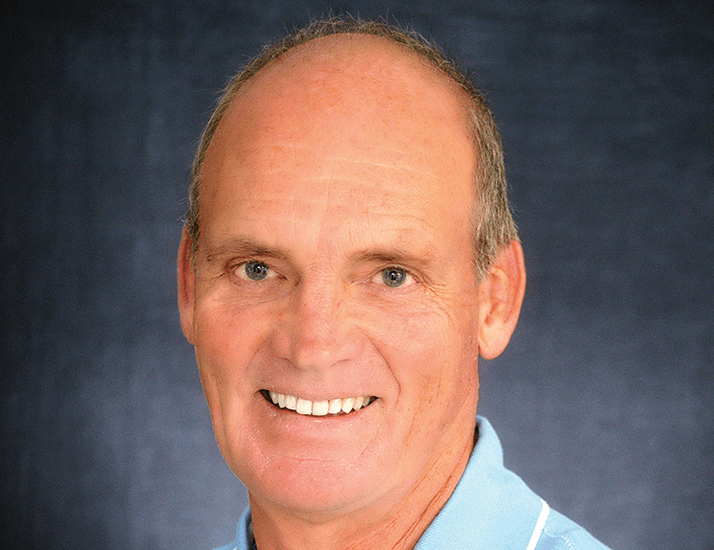
Why did you move from a big to a small company? Some might say temporary insanity. Seriously, I had been at Zeiss for eight years and felt that a change was needed at the end of 2008. It has not been the optimal period for getting funding, but I saw the potential of Oraya technology to make a tremendous difference to patients with wet age-related macular degeneration (AMD).
What are Oraya’s origins? It was founded in 2007 with the concept of delivering radiation to the back of the eye. It’s an invented-in-house technology, with two major innovations. One is the use of low-energy X-rays, which sounds like it should have been attempted before, but wasn’t. Once you have that, physics is your friend – you can deliver the X-ray dose with a high level of precision to a very small volume of tissue. The other is the ability to control and track eye motion, which allows the therapy to be delivered accurately. Between 2007 and 2009 the company did the feasibility work, including animal and human studies. I joined in July of 2009 to replace the founder, and since then we’ve done a randomised, sham-controlled, double-masked study across five European countries. The two-year data have been very well received and we now have initial three-year safety data, which are really encouraging. In the target population, a single session of our stereotactic radiotherapy provided equal or better vision outcomes than anti-VEGF mono-therapy and significantly reduced the injection burden. The therapy provides a significant cost benefit to payers, and helps physician take on the flood of patients from the cumulative and ongoing growth in wet AMD, as well as new patients with diabetic macular edema now treatable with anti-VEGF.
How big is the problem – and market – that you are tackling? Take Germany; there are around 70,000 new eyes affected by wet AMD per year and approximately 400,000 patients living with the disease. Twelve centers are probably needed to provide coverage. Across Europe, the available market size is of the order of $1 billion, of which we could expect to target a 20 percent slice. The markets in Asia and North America are roughly the same, so it’s a $500-600 million annual market. What is your background? I went to our United States Naval Academy and drove nuclear submarines for a while. My first position in business was in the medical technology field working with the first CAT (computerized axial tomography) scanner company. Many years and several positions later I joined Carl Zeiss Ophthalmic as mentioned earlier, where I was CEO and board member for seven years.
How would you characterize your leadership style? Find the best and brightest people that I can, make sure they know what they are talking about, identify obstacles that keep them from doing the best job possible, and provide the tools and support to overcome those obstacles. The best lesson I ever got in leadership was the first time I walked onto a submarine as an officer – a 22 years old novice officer. The chief in charge of the divisions I was going to be responsible for said to me, “Mr Taylor, we can do this two ways. You can tell us what to do and how you want us to do it and we’ll work as hard as we can for you. Or, we can tell you what we think we ought to be doing and how we ought to be doing it, and you can help us by providing the tools and support that we need.” I thought that Plan B made a lot of sense, and I’ve used it my throughout my career. An authoritative or ego-driven leadership style works in the short-term, and can get your picture on the cover of magazines. Ultimately, though, a serving leadership style works best for me. It’s not about having no ego or no personal ambition, it simply works better.
Does your approach change in a crisis? Sure, there are times to go to the alternative plan: we may lack time, or I may not agree, or there are reasons that aren’t immediately apparent. If you have built up trust by showing support, when you step in and change things the staff will trust and follow you. Thirty employees seems small for what you are trying to achieve. How are you organized? Now, with the trial primarily done, around 40-50 percent of our resources are in technology and 25 percent in commercial. We outsource manufacturing to a partner that’s been involved right through design and development, and our first commercial system just got shipped. At this stage, the company has successfully negotiated five out of the six big risks – the technology works, the clinical trial results are positive, the data hold up after two years, there’s been no shake-up in the marketplace to make us irrelevant (in fact, just the opposite). We can build the machine and we have the KOLs in target countries on board. The remaining unknown is in the timeline for adoption of the therapy. We would benefit from broader commercial resources, whether by an acquisition, partnership or an investment, and that’s my focus at the moment. This business is my passion – that’s how it gets you when you get to work on something that makes a difference in people’s lives.
